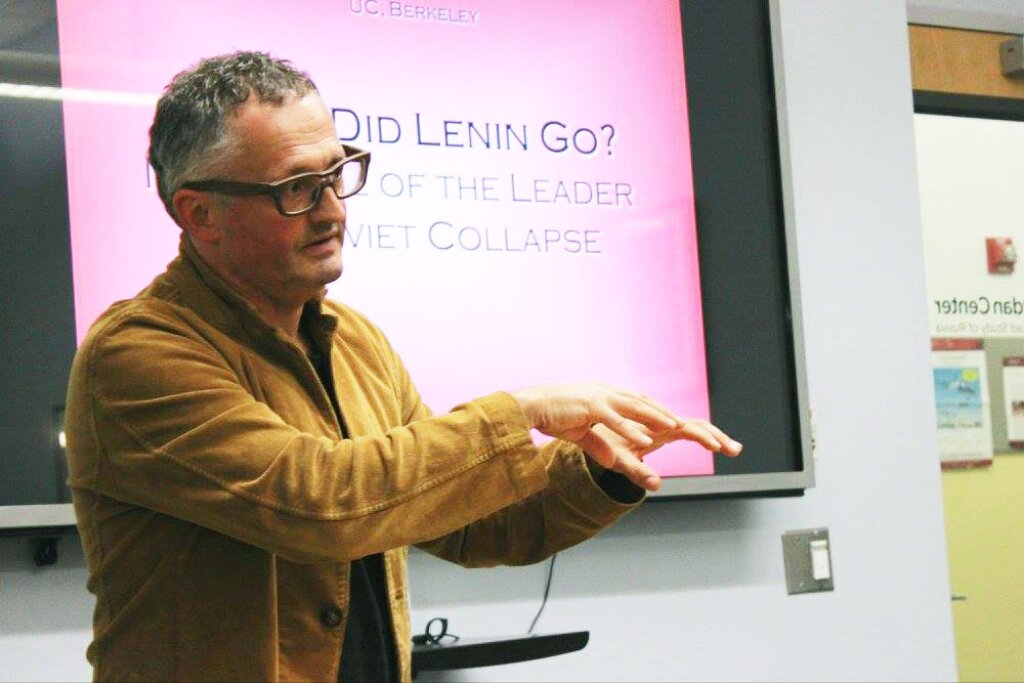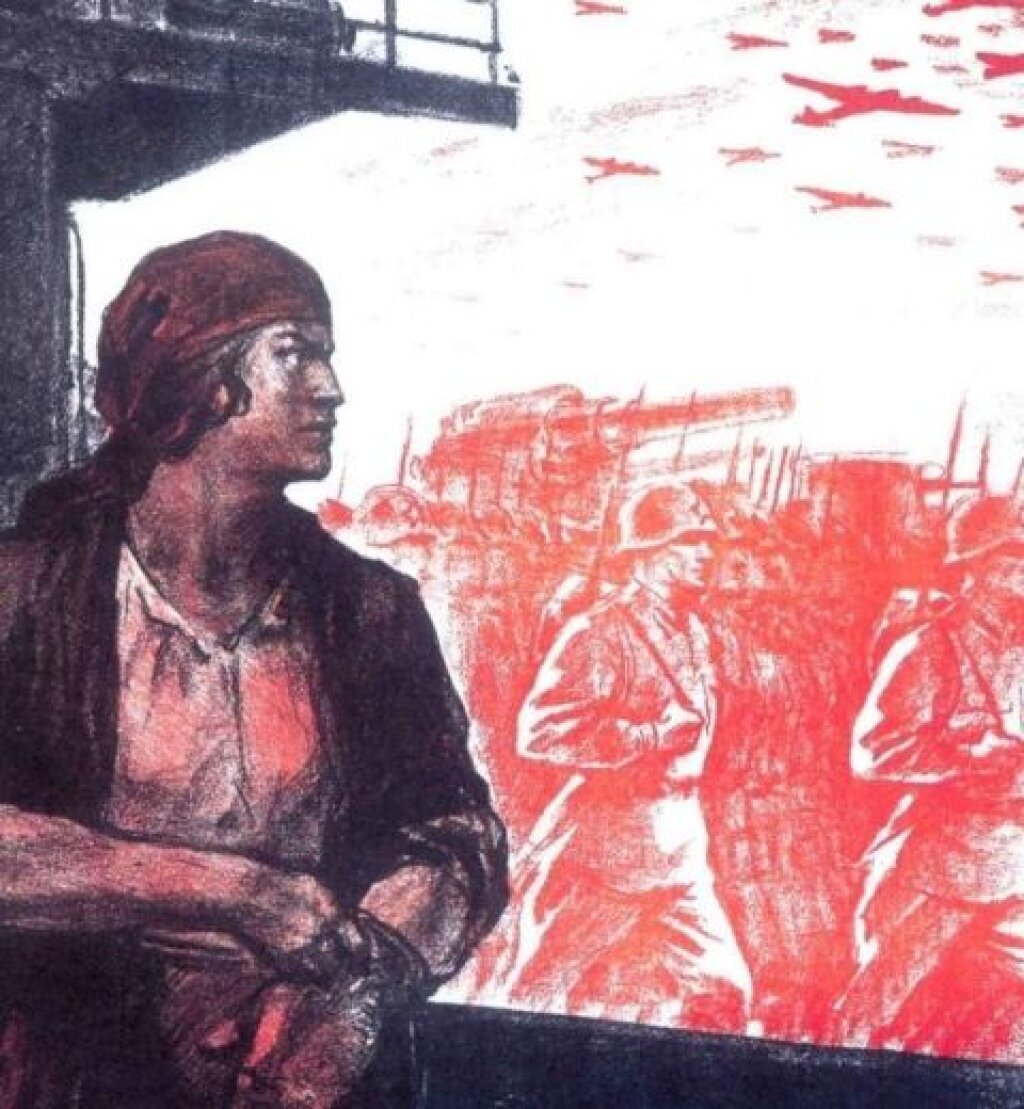On October 9, 2015, the NYU Jordan Center for the Advanced Study of Russia welcomed Professor Alexei Yurchak from University of California Berkeley for a session of its Fall 2015 Colloquium Series. Yurchak, who was introduced by Jordan Center Director Yanni Kotsonis as “one of the few people who gave us an idiom to talk about the late Soviet and post-Soviet order,” presented a chapter from his current book project on the body of Soviet leader Vladimir Lenin, titled “Where Did Lenin Go? Naked life of the leader and Soviet collapse.”
Yurchak started his talk by giving a general overview of his research, which relies on ethnographic and archival work to look at the materiality and meaning of Vladimir Lenin’s body. He noted that the preservation of the Communist leader’s body was not a preconceived project, but that once the Soviets started experimenting with embalming “there was no coming back.” He also highlighted the dynamism embodied in the process. “They are preserving the form of Lenin in a very dynamic sense – the actual shape of the body and all the bio-matter parameters,” he said, “which actually requires a lot of substitution of the bio-matter.”
In Yurchak’s project, form acquires a specific role in the politics of the sovereign communist regime. It is also particularly important in understanding the end of the Soviet Union, which was the focus of the paper presented during the colloquium. “Lenin is the articulation of the unquestionable truth, the idea of communism, which is articulated as Leninist discourse and can be changed, rearticulated in different terms,” he said, noting that only when Lenin's role as the center of the Soviet project came into question did the regime begin to crumble.
After saying that all the structural changes that Soviet Union underwent were presented as an attempt to return to real Leninism, Yurchak explained that arrival of Mikhail Gorbachev on the scene represented a turning point. While the new leader of the Communist Party also advocated a return to the original and absolute truth, his admission that the collective leadership “did not know the real Lenin” created a structural break within the political imagination. As a result of this “blasphemous statement,” that which was unquestionable suddenly became questionable, Yurchak explained.
Despite the importance of Lenin as a concept occupying an external space and pre-dating the regime, Yurchak highlighted that the physical body is necessary to fully understand the processes underway in the political imaginary. “The very materiality of the body and the very minute elements of the body are incredibly important to the understanding of the political role,” he said. He elaborated his point by explaining the existence of “two bodies of Lenin,” or rather two functions of the same body: one for the gaze of the public, static and mortal, and one for the abstract gaze of the political regime, perpetual and immortal. “With Lenin you actually have this Leninism and the actual person, Lenin, split; you have a corpse visible to the people and you have kind of an effigy,” he said.
Yurchak referred back to his personal experience interviewing the scientists who had worked on the project of preserving the body of Lenin. Focusing on biochemistry, he explained, allowed him to realize how preserving that dynamic form is inherent in the preservation of the smallest details – from the shape of Lenin’s legs to the structure of his skin cells. The criteria the scientists are working under might not necessarily be obvious to them, he said, but their actions, from preserving the parameters of the body to, substituting the bio-matter, hint at a prioritization of form over the physical body. This, in turns, revealshow scientific work served the political gaze.
Throughout the colloquium, members of the audience were invited to participate in conversation and ask questions. NYU Professor Mikhail Iampolski wondered why the processes of preservation of the body were dealt with in a rather secretive fashion. Yurchak explained that in his vision, the secrecy is due to the fact that it allowed the Party to present itself as a product of the absolute truth rather than the opposite. “I think the secrecy is similar to the secrecy with which Lenin’s texts have been edited and re-edited,” he said. “If you don’t show the manipulation, Leninism appears to be the source of the Party’s actions rather than the result of the Party’s actions.”
A large part of the discussion revolved around Yurchak’s own method. In particular, rejected the notion of a chronological structure in his work, instead comparing his analysis of the Soviet political field from 1988-1991 as a testing of temperatures at different moments in history. “We need a particular method which is not focusing on the causal,” he said, describing his method in terms of emergence.
Kotsonis described this method as an attempt to identify a different kind of heuristic device. “What’s important for me in this concept is that you have a radical shift, for example in the political system, which can only be observed when it happens and only in retrospect can be analyzed,” Yurchak concurred.
Speaking of emergence, Iampolski suggested a parallel with Gilbert Simondon’s description of emergence of the new and his assertion that there is no linear transition, no continuity, but rather what he calls the passage– different coexisting stages. Yurchak replied that his ideas were inspired by Terrence Deacon’s The Symbolic Species and his words on the coevolution of brain and symbolic capacity. “It’s a very new way of talking about evolutionary changes,” he added. Meanwhile, NYU Professor Ilya Kliger pointed out that Yurchak seemed to be attempting to claim a semi-autonomous domain in his discussion of the emergence of a particular political imaginary.
Other questions touched upon the contrast between the traces of Lenin that have survived the collapse of the Soviet Union and those that are gone, the parallel between Lenin and the Founding Fathers in the United States, and the relationship between Yurchak’s current project and his previous book Everything Was Forever, Until It Was No More.



